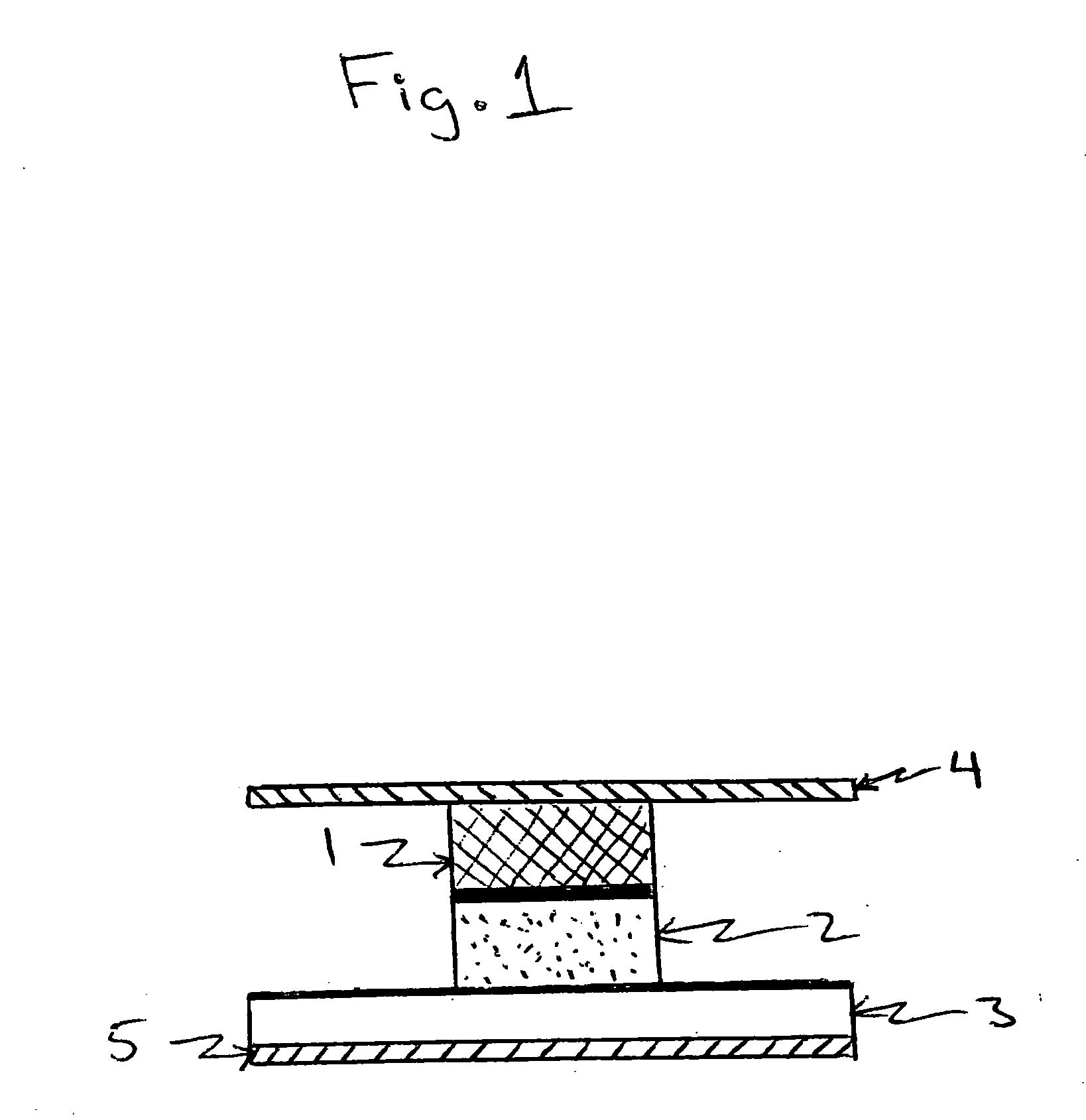Dry formulation for transcutaneous immunization
a technology of transcutaneous immunization and formulation, applied in the field of dry formulation, can solve the problems of similar redness and swelling, undesirable reaction, and secretion of intestinal fluid
- Summary
- Abstract
- Description
- Claims
- Application Information
AI Technical Summary
Benefits of technology
Problems solved by technology
Method used
Image
Examples
example 1
Immunization of Mice Following Topical Application of Lyophilized Antigen, 160 μg of Cholera Toxin, to the Skin
[0144] C57BL6 mice were immunized using cholera toxin (CT) in the following manner: 2 mg of lyophilized CT (List Biological, Campbell, Calif.) was carefully removed from the original vial, weighed on a piece of paper (1.28 mg recovered) and divided into eight approximately equal parts of 160 μg each. Mice that were immunized with powder had 160 μg of CT carefully brushed off the paper onto the skin. The mice were anesthetized and shaved prior to immunization, and the immunizing powder was left on the skin for one hour, after which the mice were thoroughly washed. Pretreatment of the skin with water essentially involved wetting the skin for 5 minutes, blotting the skin dry, and placing the immunizing powder or solution on the skin. Mice immunized with liquid were immunized with 100 μl of 1 mg / ml CT in saline. Antibodies were detected by ELISA, as described, two weeks after ...
example 2
[0146] Immunization of Mice Following Topical Application of Lyophilized Antigen, 50 μg of Cholera Toxin, to the Skin
TABLE 2Earantigenanti-CT IgG (ELISA units)tag #pretreatmentformprebleed14-day titergeo mean11707noneliquid227125111708noneliquid32711709noneliquid24711710noneliquid28611711noneliquid1911712nonepowder5355511713nonepowder175011714nonepowder95411715nonepowder173111716nonepowder34211717H2Oliquid86451182611718H2Oliquid1495811719H2Oliquid1362211720H2Oliquid1344811721H2Oliquid976511722H2Opowder4614448711723H2Opowder745111724H2Opowder253611725H2Opowder358011726H2Opowder582311727alc / H2Oliquid4656759511728alc / H2Oliquid813111729alc / H2Oliquid372811730alc / H2Oliquid1133511731alc / H2Oliquid1579711732alc / H2Opowder22100732711733alc / H2Opowder660711734alc / H2Opowder620411735alc / H2Opowder718811736alc / H2Opowder3244
[0147] C57BL6 mice were immunized using cholera toxin (CT) in the following manner: 1 mg of lyophilized CT (List Biological, Campbell, Calif.) was carefully removed from the ori...
example 3
Immunization of Mice Following Topical Application of Lyophilized Antigen, 25 μg of Cholera Toxin, to the Skin in Intermediate Responder Mouse Strain (BALB / c)
[0149] BALB / c mice were immunized using cholera toxin (CT) in the following manner. 5 mg of lyophilized CT (List Biological, Campbell, Calif.) was dissolved in 1 ml of sterile water to make a 5 mg / ml solution. For the powder immunization, 5 μl of this solution was allowed to air dry at room temperature on a glass slide. The residual powder was then scraped off on the back of the mouse skin to be immunized. Thus, mice that were immunized with powder had 25 μg of CT carefully brushed off the slide onto the skin. Mice that were immunized with the dry patch had a 1 cm×1 cm portion of a KIMWIPE tissue paper onto which 5 μl of 5 mg / ml CT was placed on a 4 cm×4 cm square of plastic wrap (Saran) and allowed to air dry at room temperature. The tissue paper and plastic wrap were then placed with the tissue paper in direct contact with t...
PUM
| Property | Measurement | Unit |
|---|---|---|
| molecular weight | aaaaa | aaaaa |
| molecular weight | aaaaa | aaaaa |
| molecular weight | aaaaa | aaaaa |
Abstract
Description
Claims
Application Information
 Login to View More
Login to View More - R&D
- Intellectual Property
- Life Sciences
- Materials
- Tech Scout
- Unparalleled Data Quality
- Higher Quality Content
- 60% Fewer Hallucinations
Browse by: Latest US Patents, China's latest patents, Technical Efficacy Thesaurus, Application Domain, Technology Topic, Popular Technical Reports.
© 2025 PatSnap. All rights reserved.Legal|Privacy policy|Modern Slavery Act Transparency Statement|Sitemap|About US| Contact US: help@patsnap.com

